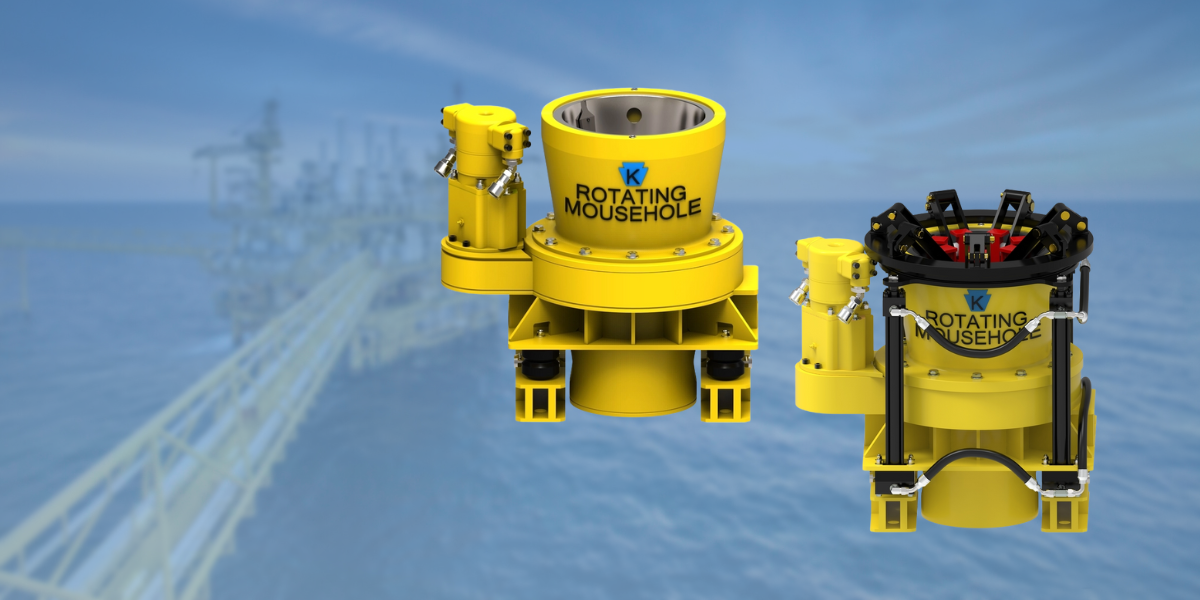
The mousehole is the area on the drilling floor where the next joint of drill pipe is stored. This is located between the rotary table and vee-door. Rotating mouseholes, introduced in the early 1990s, have helped cut the time and labor dedicated to adding joints to the drill string.
In this article, we will discuss standard mouseholes, how rotating mouseholes are made, and how they contribute to the overall drilling process.
1- Standard Mouseholes
The mousehole is a secondary hole drilled for a rig. This is typically done after the cellar and conductor holes are drilled. The conductor hole is drilled from the center of the cellar, and serves as the guide for the rig. Following this guide, the mousehole is drilled along with the rathole. Unlike the mousehole, the rathole serves to hold the kelly when drill pipe is being pulled and moved.
In a standard mousehole, a 30-foot drill pipe is waiting to be added to the drilling operation. The crew will swing the kelly over the mousehole, attach the pipe, and then pull it out of the mousehole. The pipe will then be screwed into the drill string, while another 30-foot drill pipe is placed into the mousehole for the process to start over again.
2- Rotating Mouseholes
Rotating mouseholes go one step further in that they can accommodate one stand of drill pipe. This gives a 90-foot stand. Once the hole has been made, the rotating mousehole is installed under the rig floor.
Little maintenance is needed for this device, though it should be covered when not in use. Both pneumatic and hydraulic versions are available.
From here, rigs will be able to reap the benefits of the rotating mousehole. Drilling crews are able to make up and set back stands of pipe while drilling ahead with a top drive.
However, the main time-saving benefit of rotating mouseholes comes from the “off-line” work that is done. The making up and setting back the stands and breaking down the stands is done without the use of the main hole or rotary line. Since drilling can continue, the overall efficiency of the connection time is improved, by up to 66%.
Increased Safety
Rotating mouseholes can also make drilling safer for the crew.
The device rotates the tubulars underneath the rig floor. This eliminates the need for someone to turn the stand inside the derrick. The rotating mousehole is also installed beneath the rig floor. As long as it’s covered when not in use, it’s out of the way of workers, meaning there’s one less obstacle to work around.
Finally, worker safety is improved simply due to less exposure to the pipe connection process.
The rotating mousehole has brought many benefits to the drilling industry. Drilling doesn’t have to stop, reducing the time “off-line” and thus increasing efficiency. Once installed, your crew saves time, and works more safely.
While all rigs are different, rotating mouseholes should be seriously considered as time saving options.
Why Choose Keystone?
Keystone offers high-grade equipment at a competitive price. Rotating Mouse Hole Tools are backed by our promise to build the most reliable oilfield tools on the market, to put our customers first, and respond to questions and quote request with timely solutions.
Contact our Sales Team to request more information.
About Keystone Energy Tools
 Keystone Energy Tools is a manufacturer with over fifty years of combined experience in designing, manufacturing, and delivering high-quality oilfield tools, including elevators, slips, dies and inserts, tongs dies, safety clamps, stabbing guides, drill pipe float valves, baffle plates, float valve pullers, rotating mouseholes, and tong blocks.
Keystone Energy Tools is a manufacturer with over fifty years of combined experience in designing, manufacturing, and delivering high-quality oilfield tools, including elevators, slips, dies and inserts, tongs dies, safety clamps, stabbing guides, drill pipe float valves, baffle plates, float valve pullers, rotating mouseholes, and tong blocks.
By using the latest in 3D modeling for product design and by staying current with the rapid advances in manufacturing technology and quality-assurance standards, Keystone is able to manufacture and produce the most reliable products on the market today. All Keystone Handling Tools are manufactured according to API 8C and API 7K Standards.


